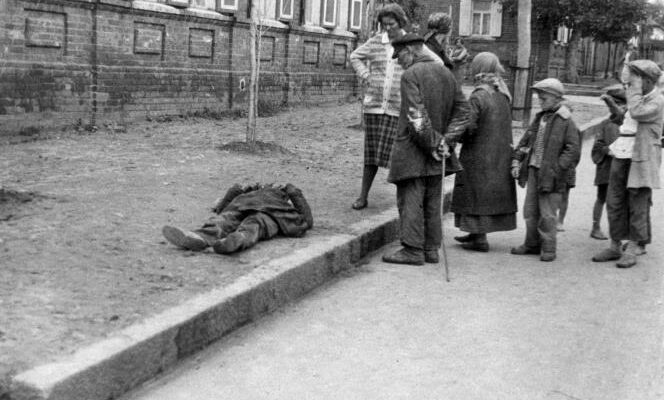FRANCE 5 – SUNDAY FEBRUARY 19 AT 10:55 PM – DOCUMENTARY
“Current Russian Crimes in Ukraine Reminiscent of the Past”declared on December 15, 2022 the European Parliament, when it had just, fifteen days after Germany, recognized as a genocide the Holodomor (“extermination by hunger” in Ukrainian), the name given to the famine orchestrated by Stalin’s Soviet Union and allegedly killed 3 to 5 million Ukrainians between 1932 and 1933.
This recognition took time. Even in Ukraine: it was not until the “orange revolution” that in December 2006, under the presidency of Viktor Yushchenko, a bill was tabled “on the perpetuation of the memory of the victims of the famine”.
The invasion by Russia on February 24, 2022 gives new visibility to this mass crime which was also a state lie. And to the investigation conducted from March 1933 by Gareth Jones, a Welsh journalist who entered Ukraine by claiming his role as adviser to former British Prime Minister Lloyd George (1863-1945).
Awarded at the last Fipadoc and Pessac International History Film Festival, Guillaume Ribot’s documentary, among the plethora of films on offer on the occasion of the first year of war in Ukraine, stands out from the crowd for its historical significance. Although, as the caveat states, “this film relating real events is partly composed of sequences of fiction films of the time”. The texts, written by Antoine Germa and Guillaume Ribot based on articles, letters, Gareth Jones’s archives, are indeed illustrated for the most part by images drawn from around thirty fictions of the 1920s and 1930s.
Whistleblower before the hour
That said, the time travel is worth the detour. In addition to boarding the private plane of the new Reich Chancellor – Gareth Jones was the first non-German journalist authorized to travel with Adolf Hitler – the viewer finds himself in the journalist’s luggage when he arrives by train on March 5, 1933 , in Moscow. A town “in a deplorable state”surrounded by villages where “we die in silence”. The images of the propaganda in favor of the “great guide of the people” Stalin drive Gareth Jones crazy – what would he say today when he heard Vladimir Putin announce that he is working to liberate Ukraine from Nazism…
Faced with torture, “swollen bellies”, emaciated bodies, the young Welsh reporter takes notes. A question bothers him: “Why would Stalin starve Soviets? » The film returns to Lenin’s promises in 1917, the famine of 1921, the launch of the five-year plan of 1928, the forced collectivization of the countryside which outraged the peasants, especially the Ukrainians. It was to break this resistance that the Stalinist Politburo organized the famine and closed the borders in January 1933.
Returning to London, Gareth Jones published several articles for various Anglo-Saxon publications, which hardly weighed against those of Walter Duranty, official correspondent of the New York Times in Moscow, Pulitzer Prize in 1932 for his “praising articles on Stalin”. Concerned about its image in the West, Moscow will invite the Frenchman Edouard Herriot to visit a model kolkhoz. “Ukraine, but it’s Beauce! »enthusiastically launched the Chairman of the Board on his return.
Two years later, Gareth Jones will cross Mongolia by train in the company of four Russians to investigate Sino-Japanese tensions. This early whistleblower will be assassinated there on the eve of his 30th birthday, with, no doubt, the complicity of the Russian services.
Bloody harvests: 1933, the famine in Ukraine, by Guillaume Ribot (Fr., 2022, 68 mins).
